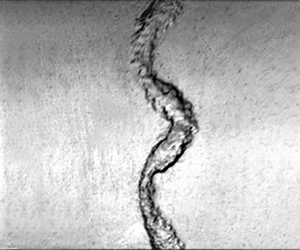Article contents
On shock-induced light-fluid-layer evolution
Published online by Cambridge University Press: 20 December 2021
Abstract

Shock-induced light-fluid-layer evolution is firstly investigated experimentally and theoretically. Specifically, three quasi-one-dimensional helium gas layers with different layer thicknesses are generated to study the wave patterns and interface motions. Six quasi-two-dimensional helium gas layers with diverse layer thicknesses and amplitude combinations are created to explore the Richtmyer–Meshkov instability of a light-fluid layer. Due to the multiple reflected shocks reverberating inside a light-fluid layer, the speeds of the two interfaces gradually converge, and the layer thickness saturates eventually. A general one-dimensional theory is adopted to describe the two interfaces’ motions and the layer thickness variations. It is found that, for the first interface, the end time of its phase reversal determines the influence of the reflected shocks on it. However, the reverberated shocks indeed lead to the second interface being more unstable. When the two interfaces are initially in phase, and the initial fluid layer is very thin, the two interfaces’ spike heads collide and stabilise the two interfaces. Linear and nonlinear models are successfully adopted by considering the interface-coupling effect and the reverberated shocks to predict the two interfaces’ perturbation growths in all regimes. The interfacial instability of a light-fluid layer is quantitatively compared with that of a heavy-fluid layer. It is concluded that the kind of waves reverberating inside a fluid layer significantly affects the fluid-layer evolution.
JFM classification
Information
- Type
- JFM Papers
- Information
- Copyright
- © The Author(s), 2021. Published by Cambridge University Press
References
REFERENCES
- 31
- Cited by


